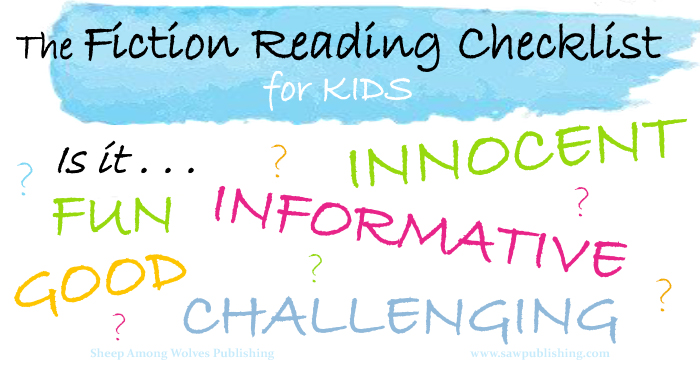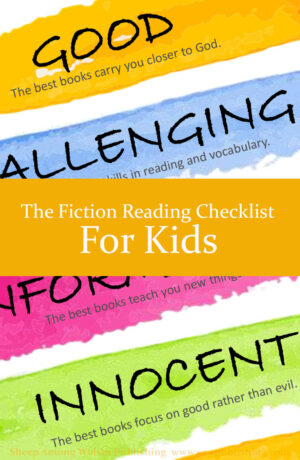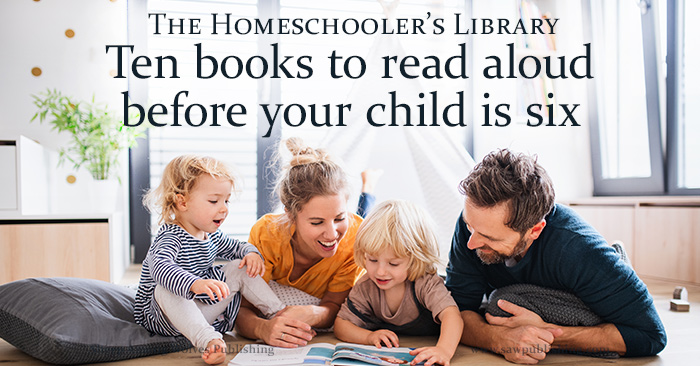The Fiction Reading Checklist for Kids!
 Ever wished you had your hands on a simple, step-by-step reading checklist for kids?
Ever wished you had your hands on a simple, step-by-step reading checklist for kids?
I work at a public library and I know the eclectic chaos which is the juvenile department. Even when everything’s properly shelved—you know, for that half hour at the end of the shift, when the library’s already empty for the night?—the children’s fiction section can resemble a densely-populated, alarmingly-uncharted literary jungle.
There are some fabulous books in there!
I know from first-hand experience that there are.
But finding them—without losing your sanity or ingesting undesired quantities of linguistic poison—can be a conundrum for the ages.
You want to do more than just pick books that won’t kill your kid—or end up buried in the bottom of the book basket. (Am I the only caregiver whose children keep their books in a literal basket? That might be another post for another day!)
When all is said and done, you’d like to not only supply your bookworms with J-FIC to keep them full and happy. You’d like to nurture a spirit of intentional, meaningful book selection that will provide them with a strong foundation for their future lives.
Enter the Fiction Reading Checklist for Kids

I happen to be a dyed-in-the-wool lover of lists.
When I’m scrolling Pinterest, I’m the user who clicks on the checklist images just to blow them up big enough that I can read the fine print.
So today I’m excited to offer the ultimate checklist for the children’s books problem: The Fiction Reading Checklist for Kids.
With five simple one-word pillars and a brightly-coloured PDF printable you’re all set to make book choices an interactive, educational family experience.
We’ll get you the link to the download in just a minute, but first let’s dive into the principles behind the five pillars:
1) Is it GOOD?
The best books carry children closer to God.
Sometimes through directly spiritual content. Sometimes through an underlying worldview. Sometimes by exhibiting the wonders of the world God has made. Sometimes by showcasing His hand in the past. Sometimes by the simple prompt to stop and think.
“Good” content sweeps across a wide, richly-filled landscape of children’s literature, but good books have one characteristic in common—they carry readers closer to their Maker and Redeemer.
Purposeful reading begins with a focus on God. As a child learns to ask “Is it good?” they lay the foundation for a lifetime of valuable reading.
2) Is it CHALLENGING?
The best books grow a child’s skills in reading and vocabulary.
Reading isn’t exactly an easy art to master! Classroom time may offer substantial focused reading practice, but the chances are it won’t be nearly enough to singlehandedly transform a child into a confident, successful reader.
Children need out-of-classroom reading that (gently!) spurs them on towards more fully developed skills.
The best children’s fiction gradually expands a child’s reading level and vocabulary, cultivating an atmosphere of ongoing development.
3) Is it INFORMATIVE?
The best books teach you new things.
And the best of the best books do it almost subconsciously!
We all know that when we pick up an encyclopedia, we’re expecting to acquire information. And despite the convenance (and cost-efficiency!) of Google, there’s nothing wrong with the occasional dive into a good old-fashioned reference book.
That being said, how much more delightful is it when you can pick up an engaging children’s story—and still come away with your horizons broadened and a new batch of information stored away in your brain?
The best children’s open doors to new worlds—whether those worlds are historical or contemporary, on the other side of the globe or in the hospital down the street.
4) Is it INNOCENT?
The best books focus on good rather than evil.
Every family is going to have slightly different standards when it comes to content flags in children’s literature. A good rule of thumb that is adaptable to almost any context is that the best books focus on what is good.
As Christians, our primary goal is to love a wholly good and sinless God. Is evil something we encounter along the way? Absolutely! And even in children’s literature, sin and brokenness are going to show up.
But the healthiest books don’t make this sin and brokenness the aim of the story. They preserve their reader’s innocence, even as they navigate the complexity of a fallen world.
5) Is it FUN?
The best books make a child want to keep on reading!
And just because this is the last question, don’t give in to the temptation to treat it as a second-class consideration. If growing passionate, lifelong readers is something you care about, then your children’s books need to be fun.
Reading is meant to be a joy!
Stories are meant to be entertaining!
The best books embrace this ideal wholeheartedly.
Teach your child to seek out good, challenging, informative and innocent books, by all means. But make sure you teach them to expect books that are just plain fun, as well.
Because the best books are 100% both.
Ready to Grab Your Fiction Reading Checklist for Kids?
I had fun creating this checklist—and I hope your growing bookworms will have fun using it.
You can download the full-colour printable right below.
I’d love to hear your thoughts on children’s books in general and family reading guidelines in particular. What criteria do you personally prioritize when you’re diving into the J-FIC jungle?
Drop us a comment in the section below!
You might also enjoy:
- You Are Not Alone: Feminine Heroines are Actually Okay!
- The Homeschooler’s Library: Best Spring Books


